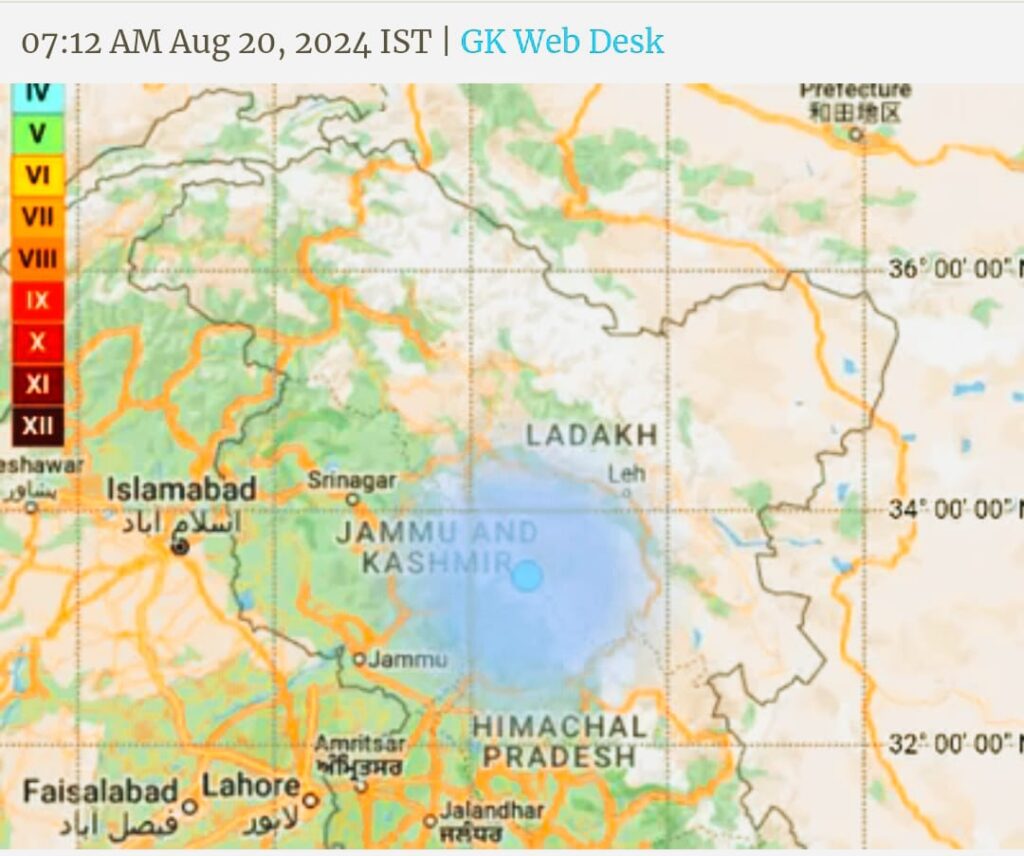Manashimaya

A pair of consecutive earthquakes shook the sleepy Baramulla district in Jammu and Kashmir early on Tuesday morning. The initial earthquake measured 4.9 on the Richter scale, and a second one with a magnitude of 4.8 occurred not long after, according to the National Centre for Seismology (NCS). Although the people of Baramulla are scared by these seismic episodes, happily, no casualties have been reported as of yet.
Details of the Baramulla Earthquakes
The initial earthquake struck at approximately 6:45 am, with a magnitude of 4.9. The NCS reported that this tremor occurred at a shallow depth, amplifying the intensity felt on the surface. Just as the residents began to recover from the shock, a second earthquake followed, registering a magnitude of 4.8 and occurring at a depth of around 10 km. The close succession of these earthquakes has undoubtedly left the people of Baramulla shaken by two consecutive earthquakes in Kashmir.
No Immediate Casualties, But Concerns Remain
Though there aren’t any immediate indications of serious damage or casualties, the double earthquakes have raised anxiety in the area. The situation is being closely watched by the authorities in Baramulla and the neighboring areas for any further developments. The fact that two earthquakes struck Kashmir in quick succession and rocked Baramulla highlights how susceptible this area is to seismic activity.
Earthquake Vulnerability in India
India’s geographical setting makes it highly susceptible to earthquakes, particularly in its northern and northeastern regions. These areas lie on the boundary of the Indian tectonic plate, which is in constant collision with the Eurasian plate. This tectonic activity creates a volatile environment, and the region’s mountainous terrain only adds to the risk. Baramulla, situated in Jammu and Kashmir, falls within Seismic Zone 5, the most seismically active zone in India. The fact that Baramulla was shaken by two consecutive earthquakes in Kashmir is a stark reminder of the region’s susceptibility to such natural disasters.
The Impact of Population Density.
The densely populated and undulating terrain of Jammu and Kashmir increases the potential for damage during an earthquake. Although Baramulla has been spared from major destruction this time, the incident serves as a wake-up call for the authorities and residents alike. The fact that Baramulla was shaken by two consecutive earthquakes in Kashmir highlights the need for continued vigilance and preparedness in this seismically active region.
Conclusion
The people of Baramulla were indeed shaken by two consecutive earthquakes in Kashmir, but the absence of casualties is a relief. As the region continues to recover from this event, it is essential to recognise the ongoing risks posed by the geographical and tectonic features of Jammu and Kashmir. This incident should serve as a reminder to reinforce the infrastructure and educate the population on earthquake preparedness, ensuring that future tremors do not have devastating consequences.
